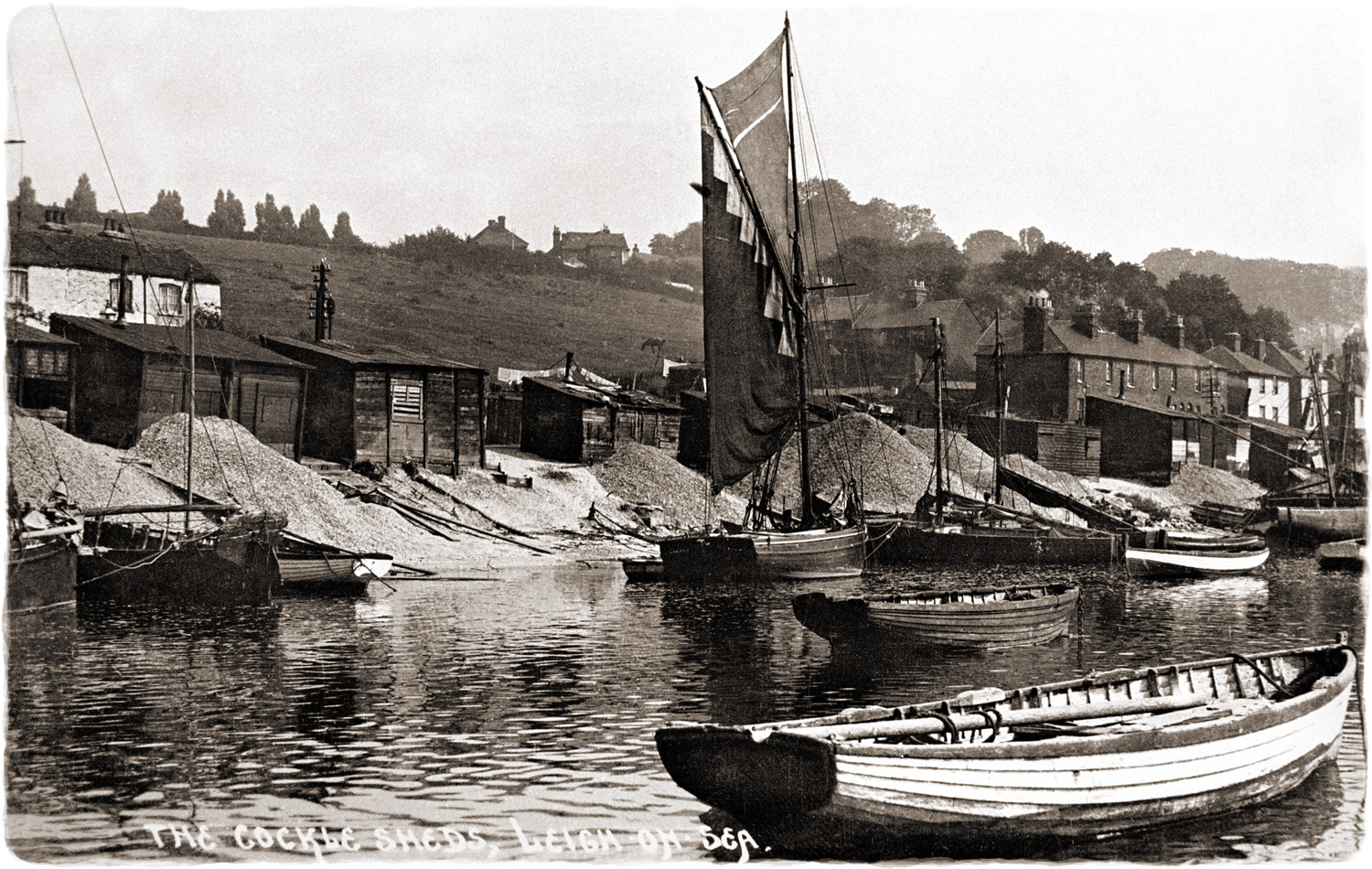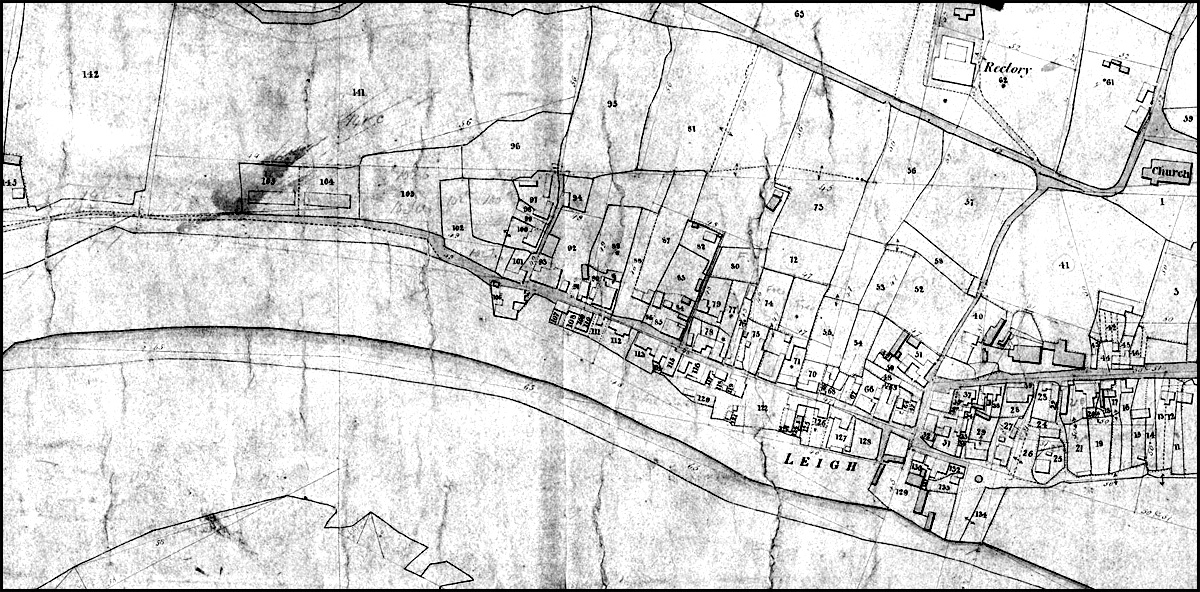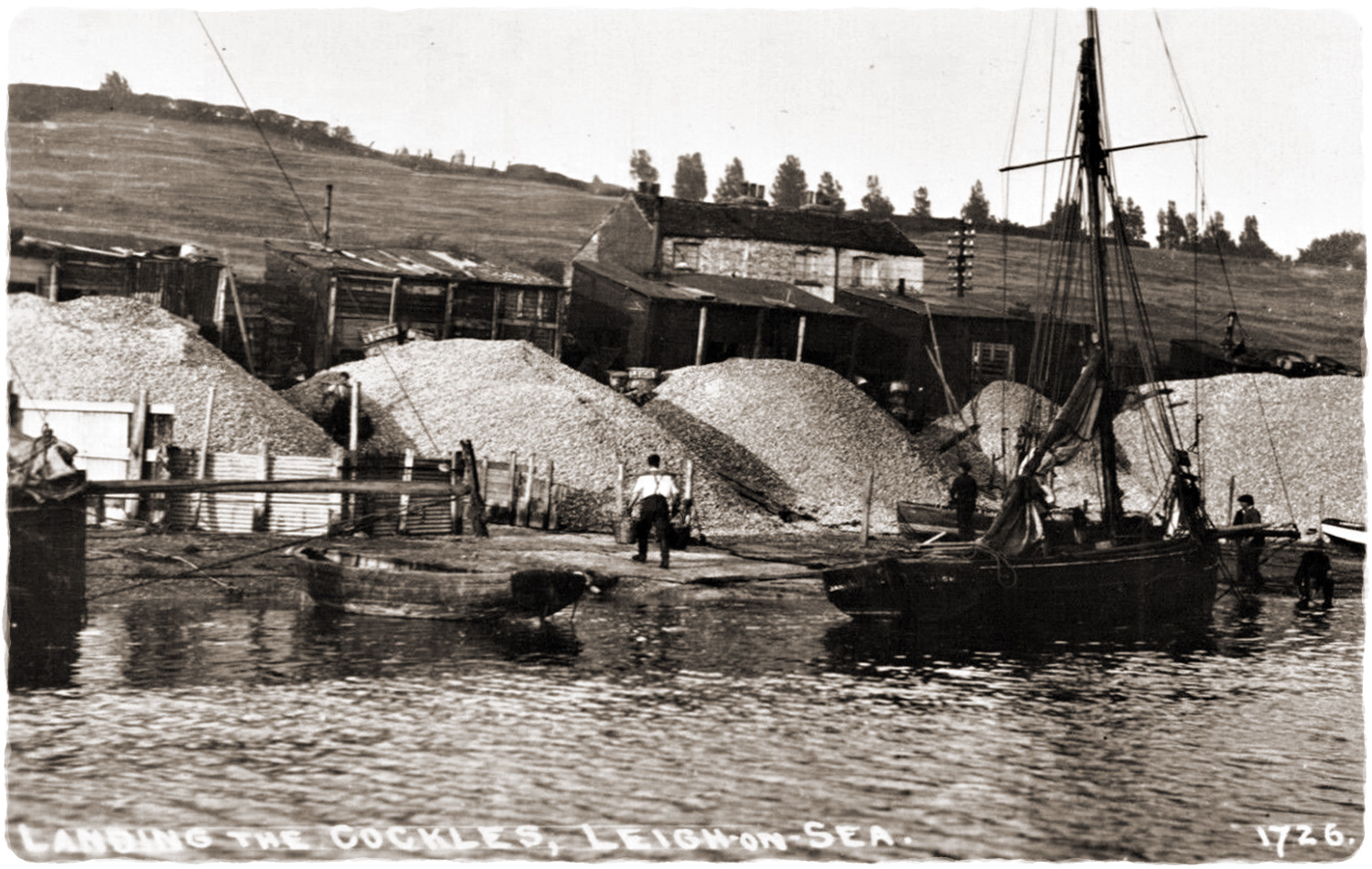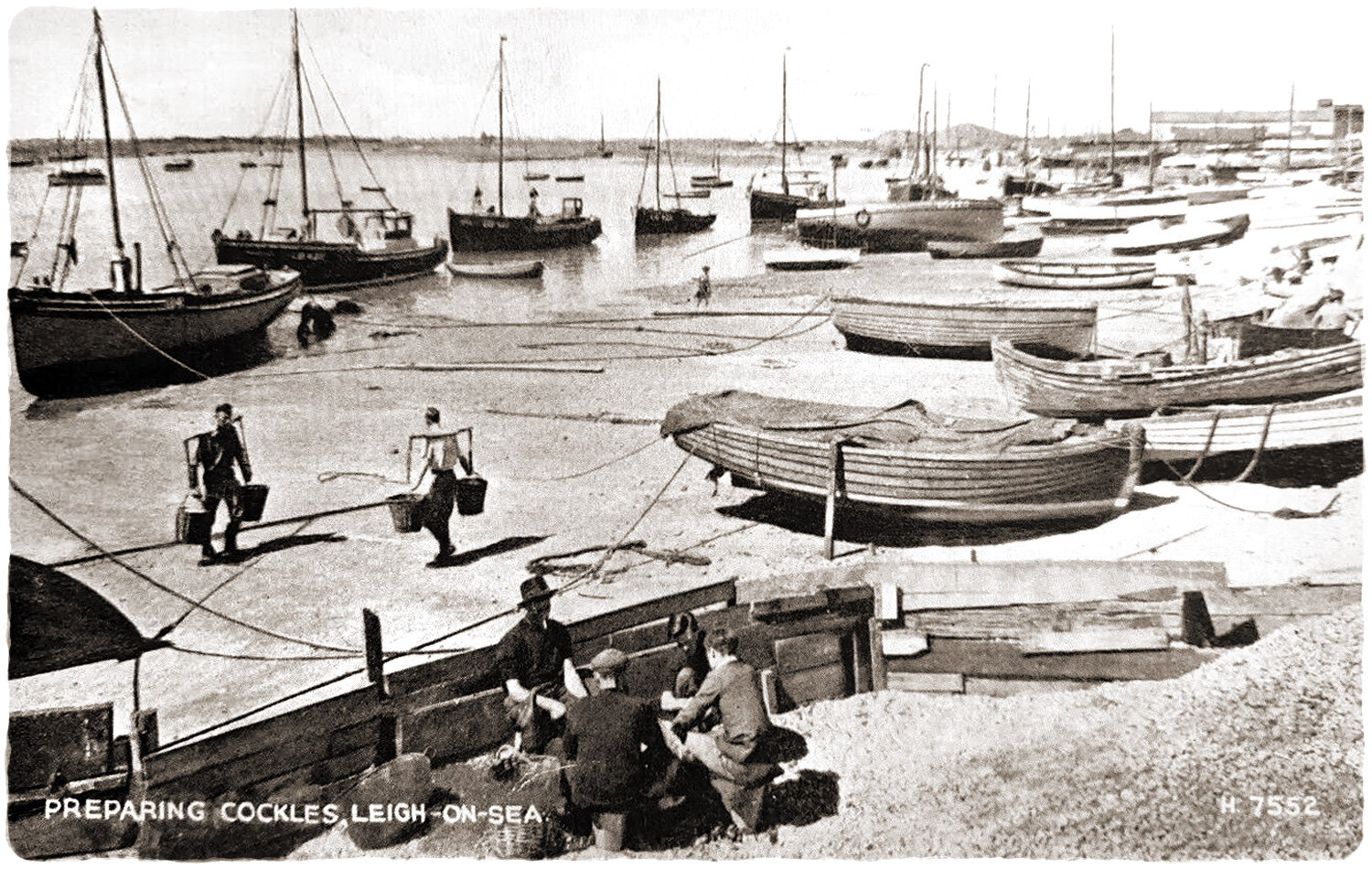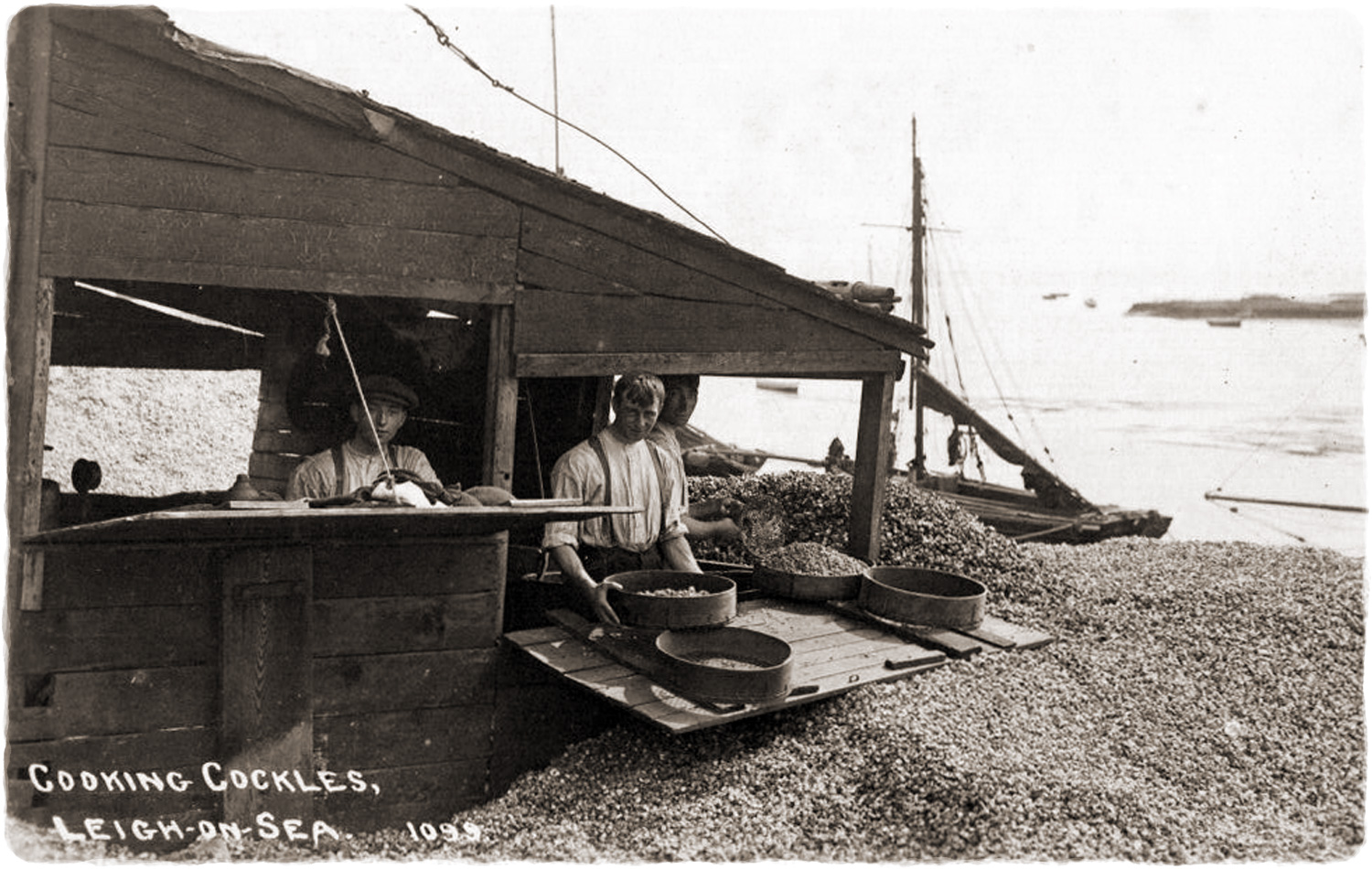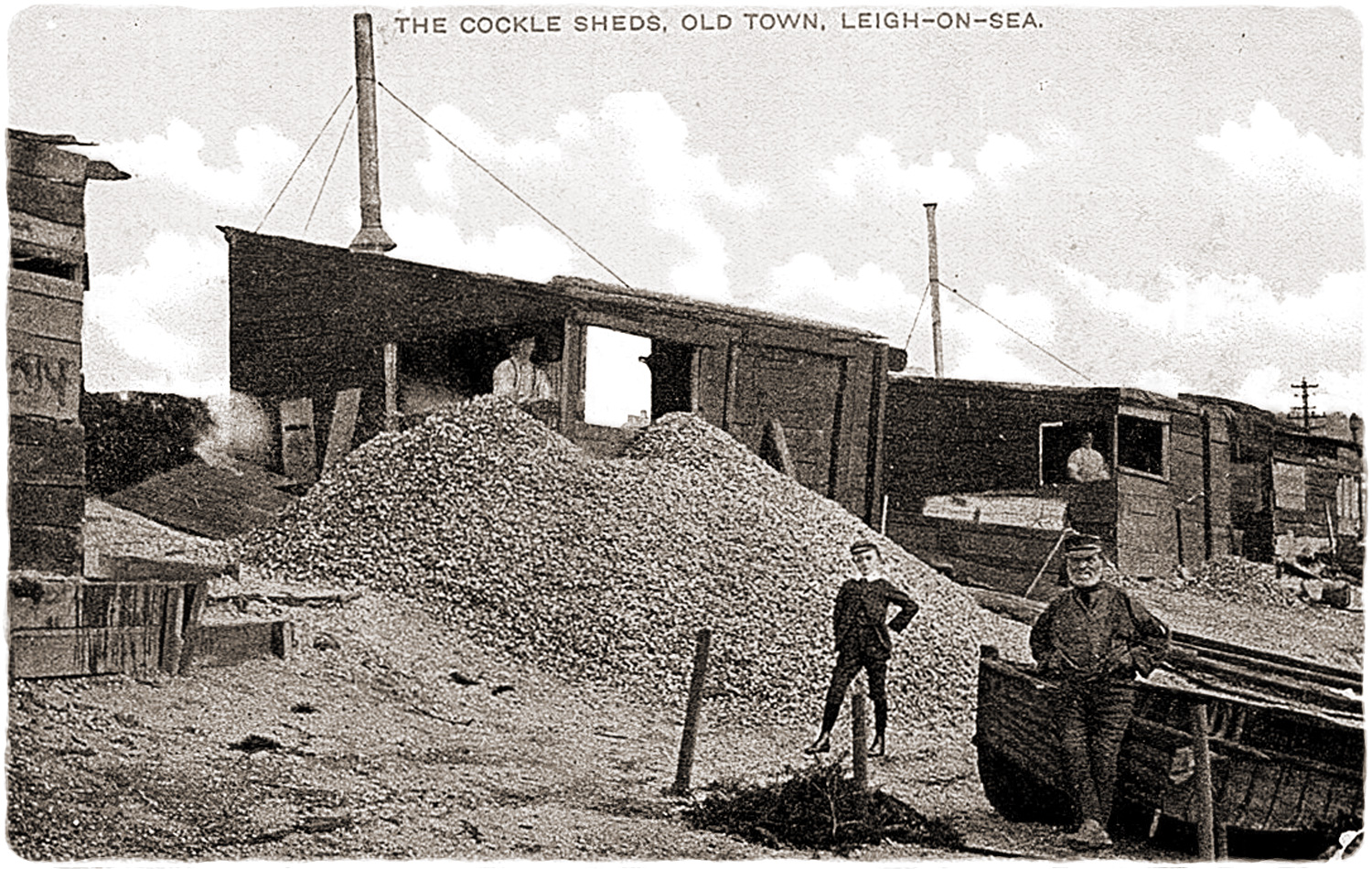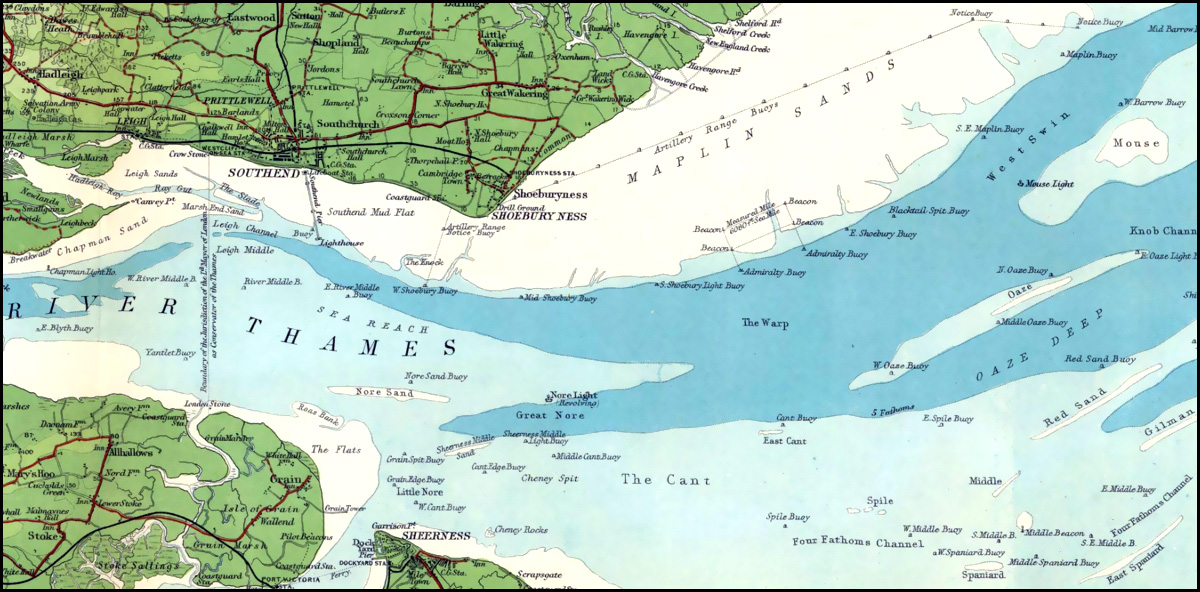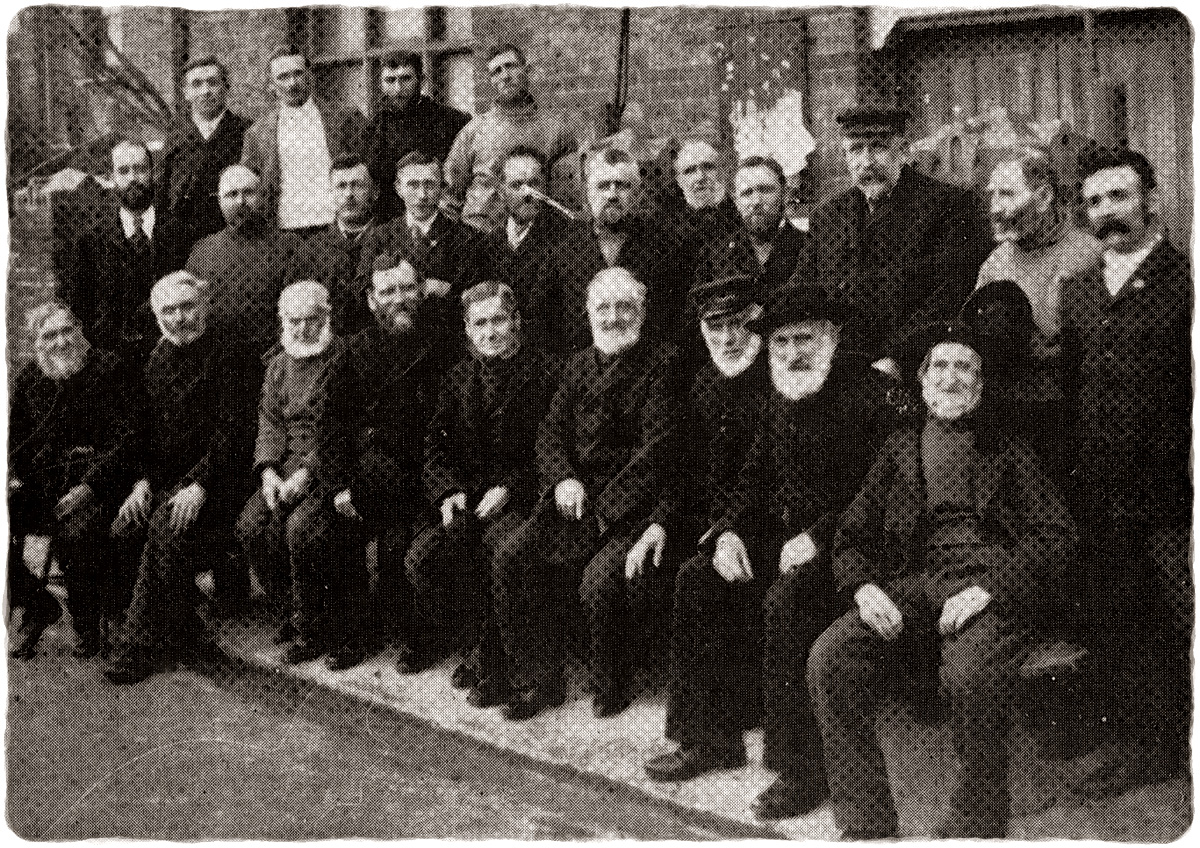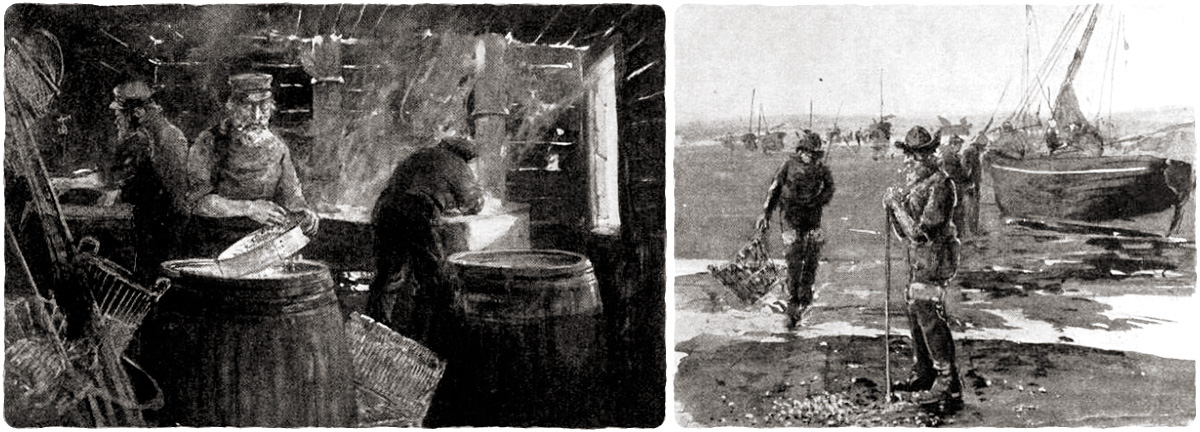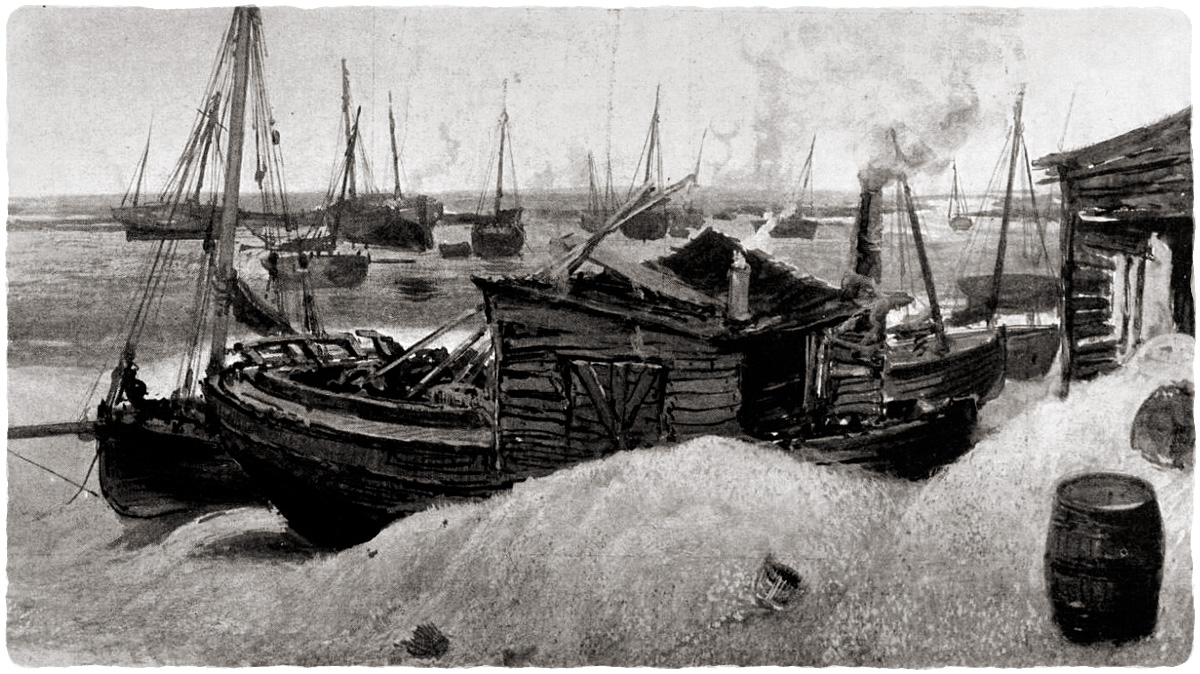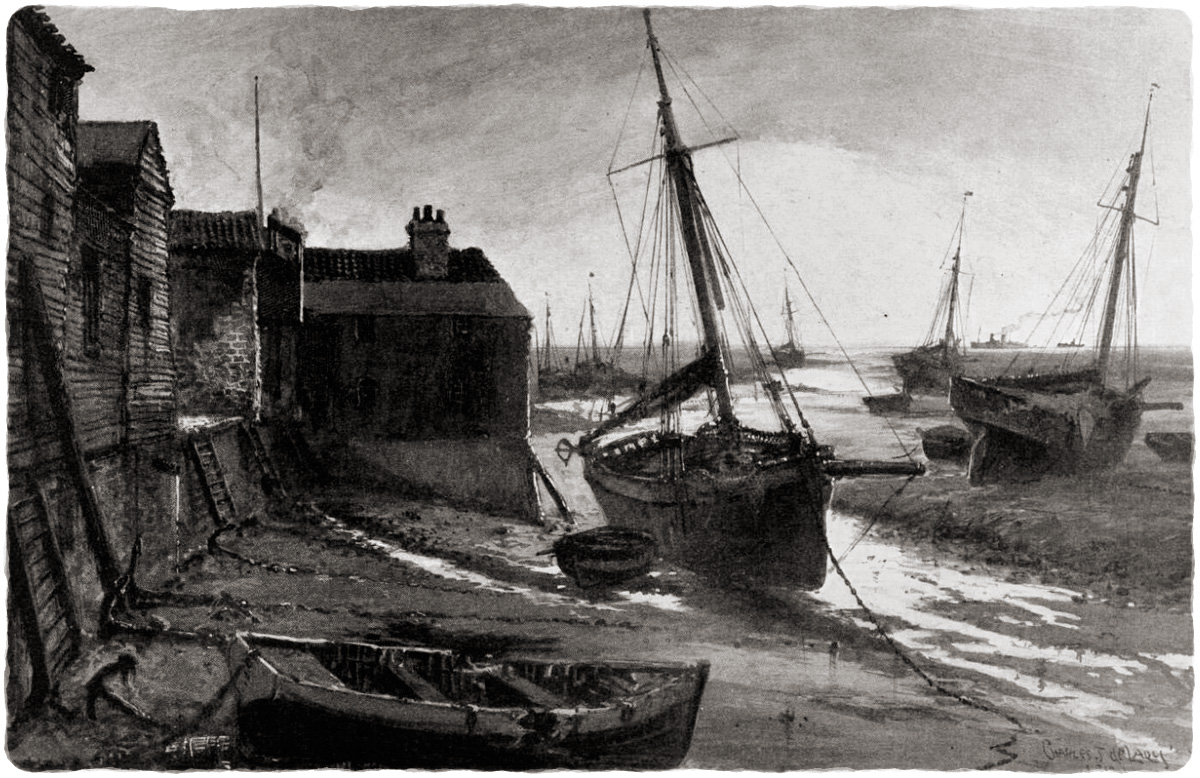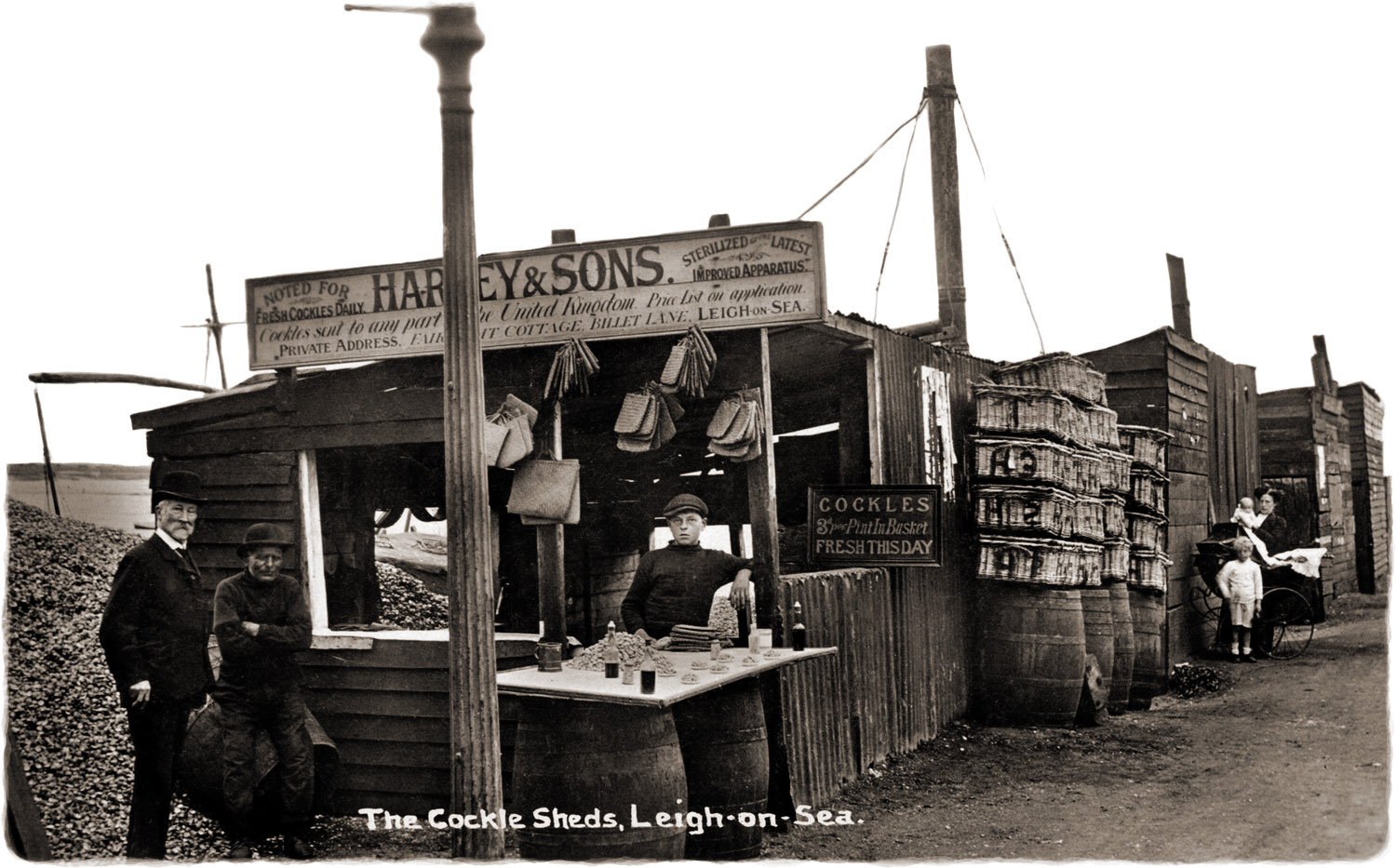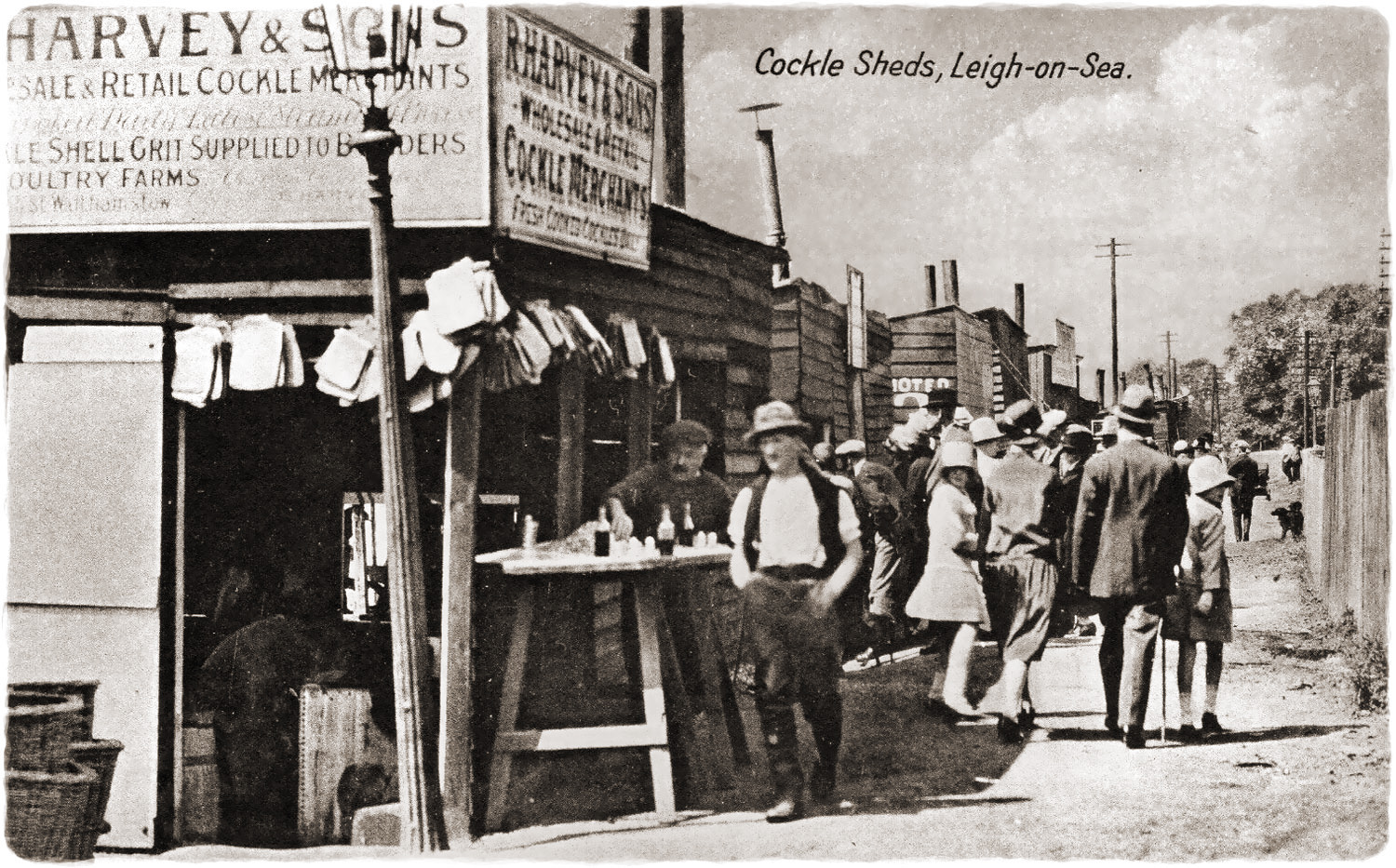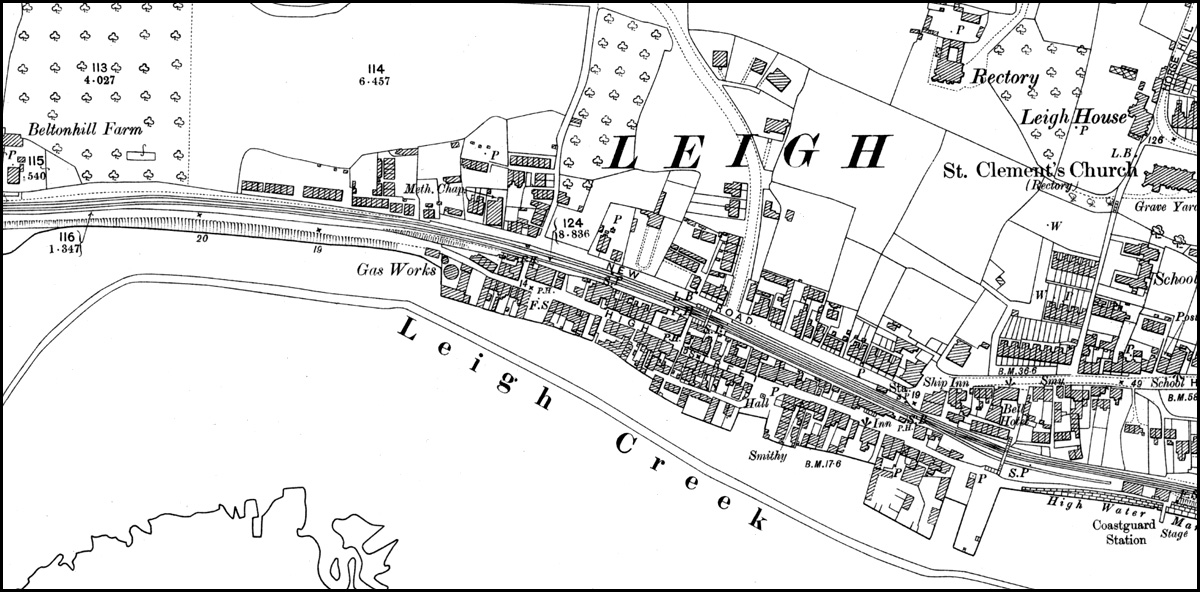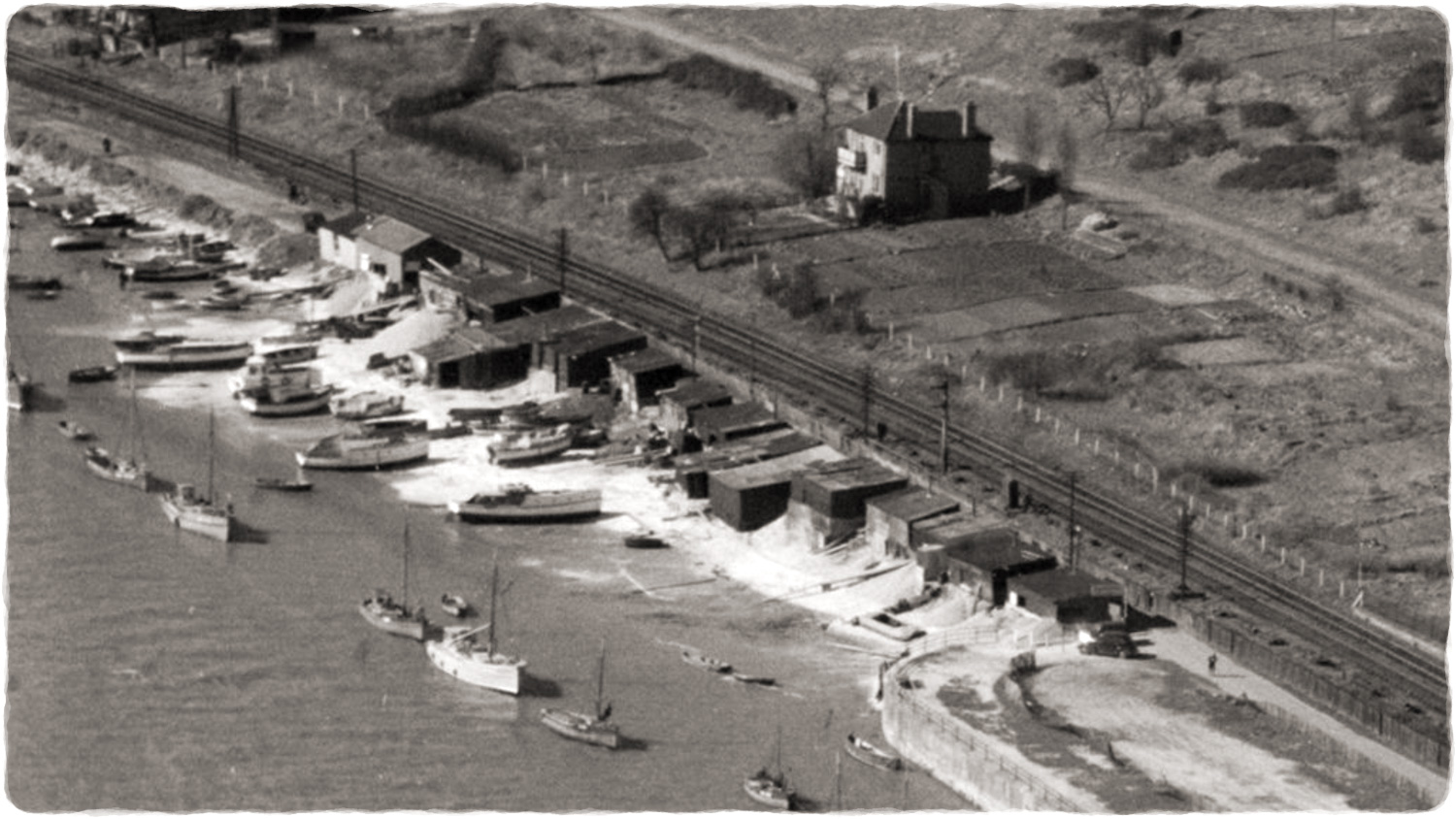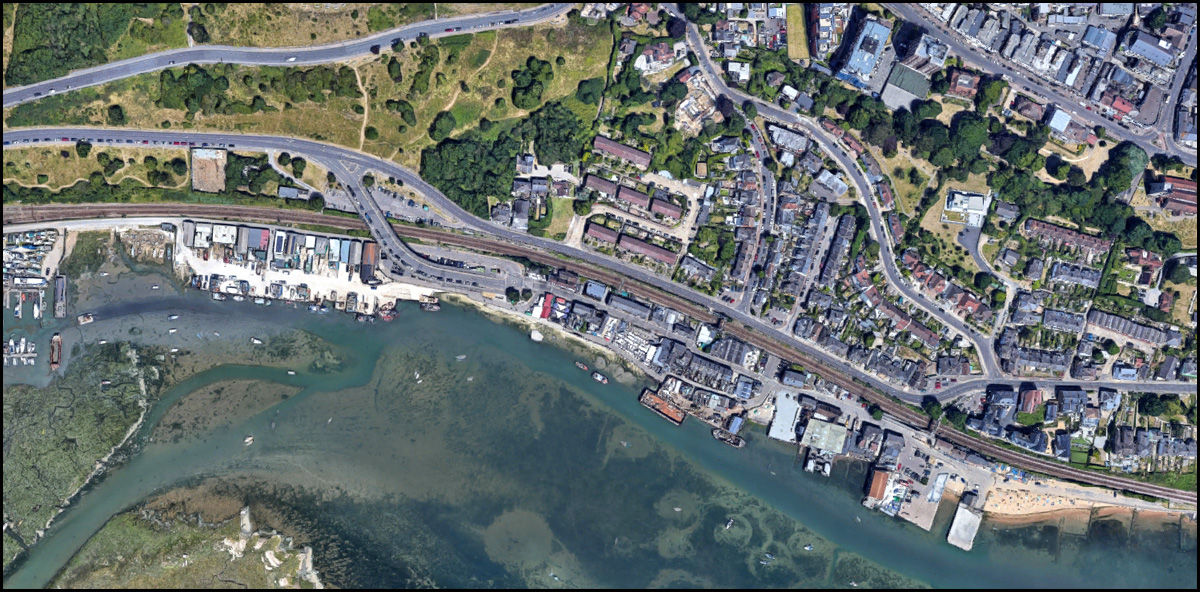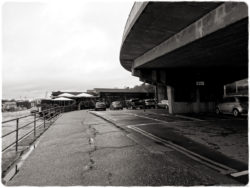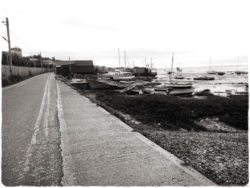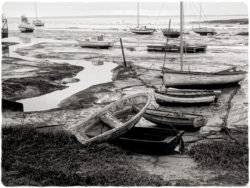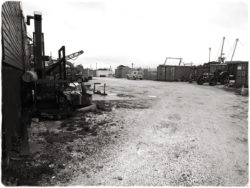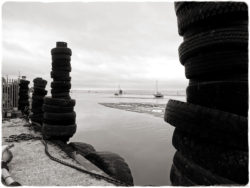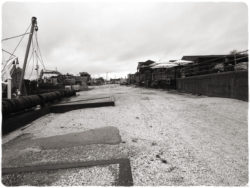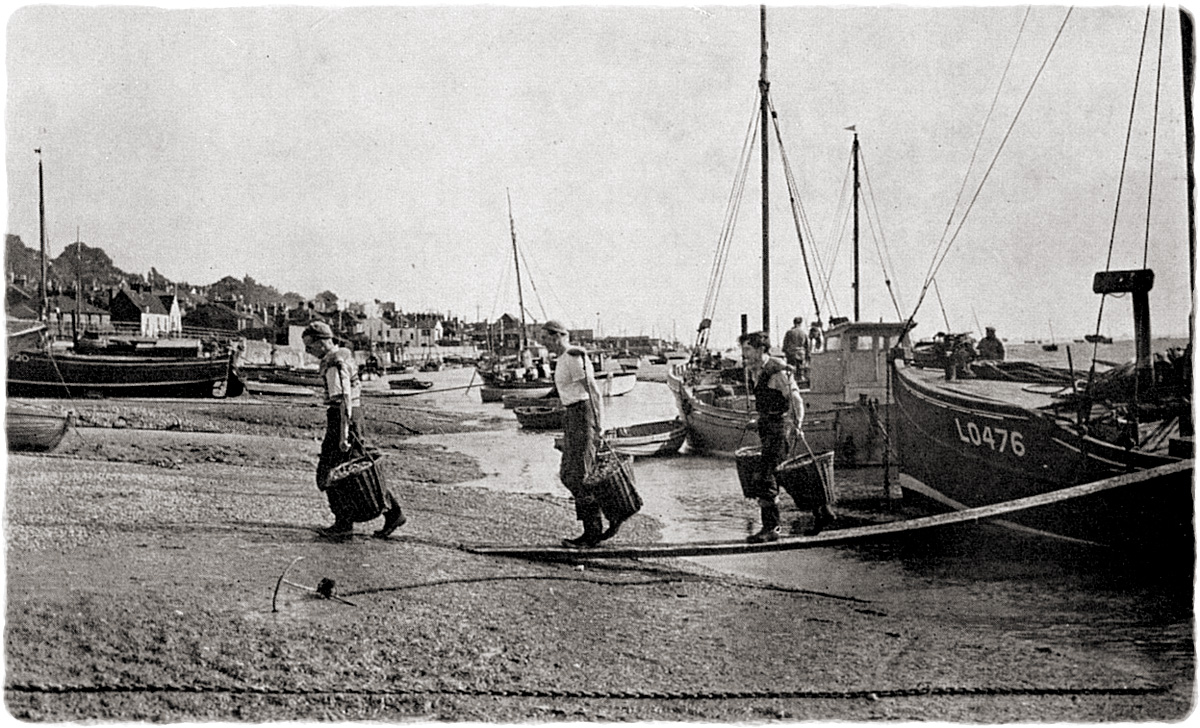The History of
1 Cockle Shed & the Harvey Family
Old Town, Leigh-On-Sea, Essex
Nestled along the tidal edge of Leigh Creek, the cockle sheds of Old Leigh have long stood as weathered sentinels of a once-thriving fishing community. Among them, No. 1 Cockle Shed holds a particularly rich history, one that traces not only the evolution of the local shellfish trade but also the enduring legacy of the Harvey family, who worked these shores for generations.
The origins of the row of cockle sheds situated along the creek in the Old Town of Leigh-on-Sea can be traced back to a time when they were little more than wooden shacks, standing before an ever-growing mountain of discarded shells. No. 1 Cockle Shed Row was run by Richard HARVEY from around 1892. Richard was from a local Leigh fishing family and was among the first to begin selling directly from the sheds.
At the beginning of the 19th century, Leigh’s trade consisted mainly of shrimp, oysters, mussels, whelks and winkles. By the 1850s, the oyster and whelk trade had all but disappeared, and by the early 20th century, the fishing industry had been almost entirely replaced by cockles.
Through census records, newspaper reports, trade directories and family recollections, this narrative explores the triumphs and tragedies of a family deeply rooted in the rhythms of the tide. It is a story of resilience, enterprise and community, a window into the lives of those who laboured in the shadow of the estuary, whose names may be fading from memory but whose legacy still echoes in the salt air and crushed shells beneath our feet.
- Cockle Sheds (c.1912)
The Harvey Family
Richard HARVEY was born in early 1864 in Leigh and was the eleventh of twelve children of William HARVEY and his wife, Emma GOSS. William, born in 1819 in Leigh, worked as a fisherman, as did his father, Daniel HARVEY. Richard’s paternal great-grandfather was John GOING, a local corn and coal merchant of some wealth. Emma was born in 1824 in Prittlewell, Essex, the daughter of agricultural labourer Henry GOSS, who originally came from Suffolk.
When the 1841 census was taken, William was age 21 and living with his parents, Daniel and Sarah, in a cottage on Billet Lane, Leigh, while Emma, aged 15, was living with her parents, Henry and Ann, on North Street, Prittlewell. They married on 16th January 1843 at St. Clement’s Church in Leigh, when they were 23 and 19 respectively, although Emma stated her age as 20. She was also five months pregnant at the time, with their first child born in May, followed by another eleven over the next twenty-four years.
- William Harvey (1843-1893) – m.1869 to Emily Harriet Warrick Quilter: fisherman
- John Harvey (1844-1904) – m.1866 to Mary Ann Newman; fisherman
- Daniel Henry Harvey (1846-1827) – m.1870 to Mary Ann Elignor Robinson; fisherman
- Emma Harvey (1849-1915) – m.1868 to William John Little (a fisherman); charwoman
- Henry Harvey (1851-1852) – died aged 14 months
- Eliza Ann Harvey (1853-1915) – m.1875 to Arthur Robinson (fisherman, lockman, barge foreman)
- George Joseph Harvey (1855-1917) – m.1875 to Emma Elizabeth Kerry and c.1895 to Louisa Hannah Margaret Emmerton; fish hawker
- Samuel Harvey (1858-1938) – m.1880 to Louisa Jane Ellis; fisherman
- Ann Harvey (1860-1927) – unmarried; domestic servant, nurse, charwoman
- Joseph Harvey (1862-1879) – died aged 17
- Richard Harvey (1864-1929) – m.1888 to Harriet Louisa Phipps; fisherman and cockle merchant
- Henry Goss Harvey (1867-1939) – m.1888 to Eliza Alice Ellis (sister of Samuel’s wife); fish porter
When the 1851 census was taken, the Harvey family were living on “Leigh Street,” and their youngest child was just 6 days old and yet to be named (Henry). Emma’s mother, a nurse, was also present on the night the census was taken. Tragically, Henry died at fourteen months old at the beginning of June 1852 and was buried in St. Clement’s churchyard.
The 1847 tithe map of Leigh (below) shows the Old Town just before the railway line carved its way through the houses during 1854, with the station opening on 1st July 1855. At this time, there were several hundred acres of oyster pits off the shore in Leigh Creek, whereas in Southend the beds were used for mussels. After the railway arrived, the village was much changed, with many of the old unsanitary, hovel-like cottages swept away. The line opened up opportunities for the local fishermen, enabling more reliable carriage by rail of their oysters, winkles, mussels and shrimps into London for sale.
- Leigh Tithe Map 1847
- Essex Sheet LXXVIII Surveyed 1873, Published 1880
The Harvey family were living on Alley Dock when the 1861 census was taken, just off the High Street. The lane still exists, though no cottages remain on it today. In 1866, part of the wharf fronting the creek was sold by owner William FOSTER to the new Leigh Gas Light And Coke Company, in order to light the town. A gasometer and associated buildings were erected just along from the cockle sheds.
Emma’s father died the following year, in 1867, aged 77, and one month later Emma gave birth to her twelfth and final child, naming him Henry after both her father and the baby they lost in 1852. The family were still living on Alley Dock when the 1871 census was taken. Richard was now aged 7, and his three eldest brothers and eldest sister were all married with children of their own.
On 20th October 1879, Richard’s brother Joseph sadly died aged 17 (Richard was 15). The family were living on the High Street when the 1881 census was taken, and Richard was now working as a fisherman, most likely alongside his father. His younger brother Henry, aged 14, was also working as a fisherman. They were the only two children still living at home, with all but one of their siblings now married. Richard’s father, William, died later that year, aged 62.
Up until the age of 22, Richard had been fishing for shrimp, and then in 1886, just before marrying Harriet, he took up cockling. In 1881, Harriet, aged 18, was working as a general servant in Leyton, Essex. Perhaps her work took her further into south-east Essex, where she then met Richard.
Richard HARVEY married Harriet Louisa PHIPPS in early 1888. Harriet was born in 1863 in Broxbourne, Hertfordshire, and was the second of five children of Alfred PHIPPS, a general labourer for the New River Company, and his wife, Susannah HARKNETT, the daughter of a shepherd. The PHIPPS family later moved to nearby Cheshunt, where Harriet’s mother died in 1878, when Harriet was fifteen. Her father swiftly remarried, to Mary Ann Prior DAY, on 11th January 1879. Mary was fourteen years his junior and an unmarried mother of two young children at the time. Harriet’s father went on to have six more children with his second wife between 1879 and 1893.
Richard and Harriet had eight children born between 1888 and 1904, but sadly lost their fourth child at under 3 months old, and their last two children at ages two and one.
- Alfred Vincent Harvey (1888-1963) – m.1914 to Edith Annie Dickens; fisherman
- Gilbert Harknett Harvey (1890-1954) – m.1916 to Annie Louise Cable; shellfish and poultry merchant
- Bertha Rosetta Harvey (1892-1979) – m.1921 to Henry Edward Dickens
- Mabel Harvey (1895-1985) – died under 3 months old
- Herbert Owen Phipps Harvey (1897-1978) – m.1923 to Elsie Venus; cockle salesman and fisherman
- Alice Glenrosa Harvey (1899-1957) – m.1921 to Arthur Maryon
- Clifford Goss Harvey (1901-1904) – died aged 2
- Irene Harriet Coleman Harvey (1904-1905) – died aged 1
In 1891, the young family were living at 1 Mulberry Cottage, off Billet Lane, and Richard, aged 27, was working as a fisherman, with the census noting that he was an employer. To aid with his fishing, Richard procured boys from the Rochford Workhouse to teach his trade. His mother, Emma, was living on her own, occupying two rooms on the High Street. She was aged 66 and working as a laundress and fishnet knitter.
Offensive Smells
The year 1892 was full of notable events, both for Richard personally and for the cockle fishers more generally. Firstly, it was during that year, according to one of his descendants, that Richard first started working from the cockle sheds. At that time, there were around 100 cocklers operating out of Leigh. They would go out on their smacks and rake cockles from the seabed between low tides, filling wicker baskets which were then emptied into their boats. On returning to Leigh, the basket loads were carried to the creek tied to yokes, and the cockles were washed in the water for several days to clear them of sand.
The next stage of the preparation involved briefly plunging the cockles en masse into boiling water, before separating from their shells using a large sieve. The cockles were then washed three times before being ready for sale. The discarded shells were thrown out behind the sheds, which gave off “a most offensive smell” as any remaining flesh decayed. In August of that year, a notice to abate the nuisance was served to all the owners of the cockle-boiling shanties. One such owner, John HILLS, simply returned the letter marked “refused,” clearly unwilling to change his methods or admit to finding the stench offensive.
To make matters worse, mingling with the reek of rotting cockles was the delightful scent of manure, which was carted through Leigh from the wharf to Hadleigh for use at the Salvation Army’s newly established Farm Colony. The occupiers of the cottages just opposite, on the other side of the railway line, must have had a great deal to endure!
These old photographic postcards capture the landing, carrying and cooking of cockles at Leigh in the early 20th century.
- “Landing The Cockles, Leigh-On-Sea”
- “Preparing Cockles, Leigh-On-Sea”
- “Cooking Cockles, Leigh-On-Sea”
- “The Cockle Sheds, Old Town, Leigh-On-Sea” (1922)
Target Practice Off Sheereness
Just prior to the matter of unseemly odours, a much more serious issue arose, one that threatened to jeopardise the livelihoods of the cocklers. In May 1892, a number of Leigh fishermen appeared before the Departmental Committee inquiring into the issue of offshore target practice near Sheerness, Kent, situated on the opposite side of the River Thames from Shoeberyness. The army sought to impose a bylaw regulating their exercises in two areas east and west of Sheerness, creating a protected zone from which fishing vessels would be excluded.
Unfortunately for the fishermen, these were the very areas used for cockling and shrimping, prime fishing grounds relied upon by several hundred men each day. The nearby Maplin Sands off Shoeburyness had already been closed for artillery practice, so the prospect of losing yet another productive area, along with one or more days of work each month, was deeply concerning.
Most fishermen were content to continue as things stood, simply steering clear of gunfire from the warships. One of those who attended the hearing was Richard’s brother William, a member of the Fisheries Committee for Kent & Essex. He stated how he had “collided with one of the targets” and how the firing from Sheerness was “not always so particular as they ought to be.” Another brother, John, also a fishery officer, acknowledged that they were “inconvenienced by the firing from the forts, but they would rather keep on in the same way.” He added that the warships placed their targets and had “had shot very close to him.”
This seems to have been an ongoing issue, as it was still causing problems as late as 1929.
- Sheet 26 Essex, Published 1903
Drowned Off The Nore
The final major event for Richard in 1892 occurred on 27th September, when his eldest brother William, aged 49, drowned after his boat capsized while rescuing the crew of a small yacht. William had been working with his brother Samuel just prior to his rescue attempt on their fishing smack Gertrude, and had previously played a key role in the rescue of the crews of many small yachts over the years.
A reward of £2 was offered for the recovery of William’s body, which was found two days later on a sandbank three miles from Whitstable, Kent, by his brother John and brought back to Leigh. The inquest noted, as a sideline, that William could not swim. During the well-attended funeral the following week, Richard was “seized with a fit, which lasted several minutes.“
Richard and Harriet lost their fourth-born child as a baby in early 1895, and in early 1898, Richard’s mother, Emma, died aged 74. By 1901, the family had moved to “Fairlight Cottage” on New Road. Richard continued to work as a fisherman, though this time he was recorded as a “worker,” while his brothers George and Daniel were both listed as fish merchants with their own accounts.
The photograph below was taken in 1902 and captures the Leigh fishermen who were members of the “society class” of Old Town Methodist Church. Richard HARVEY, aged 38, is in the centre row, third from the left.
- Leigh Fishermen 1902
Leigh’s Suspected Cockles
This same year, there were several cases of typhoid fever both locally and in London, and the source was traced back to Leigh’s cockles. Leigh Creek lay just over a quarter of a mile from a sewage outlet, and the cockles had become polluted as they lay there (ironically) for cleaning. The boiling process was also found to be insufficient in length to kill the bacteria, prompting a shift from boiling to thorough steaming (although some small-scale sellers continued to use copper pots).
Many fishermen did not believe the outbreak had been adequately traced to Leigh and continued to lay their cockles in the creek. Several more cases of typhoid fever were reported, and Leigh cockles were temporarily banned from sale at Billingsgate Market in London. The Illustrated London News ran a prominent article entitled “Microbes in Molluscs” in February 1903, with illustrations by Charles de Lacy.
Cockles were still causing outbreaks of typhoid in 1908, again traced back to Leigh. It was now well recognised that Leigh Creek was contaminated with sewage and that the cockles needed to be thoroughly cooked before sale. As a result, the local rector and one resident were appointed to ensure that the instructions of the Fishmongers Company were followed by all cockle sellers, lest they lose their livelihoods.
“Leigh cockle-boilers at work. The man nearest the window is boiling the cockles, the foreground and other figures are detaching the shells and washing the mollusc in a sieve through three waters. The boiling process is useless as a disinfectant.”
- “Leigh Cockle-Boilers At Work” and “The Source Of The Shell-Fish Contaminated In Leigh Creek”
“The source of the shell-fish contaminated in Leigh Creek. The cockles dug on the Maplins are laid in Leigh Creek to clear them of sand, and become polluted by sewage. They have been condemned by the Fishmongers’ Company.”
- “A Cockle-Boiling Hulk At Leigh”
“The impurity of Leigh cockles : The sewage-polluted creek, Leigh-On-Sea, where the shell-fish were contaminated. The creek, our Artist notes, was covered with mud, refuse, and slime. The Medical Officer for the City of London visited the creek on January 3, pronounced it “obviously filthy,” and condemned it as a place wherein to deposit cockles. Leigh cockles are taken from Maplin Sands, and laid for a few days in the creek to clear themselves of sand. Half a mile above this spot the Leigh sewage is discharged. The boat is a typical Leigh “borley” of fifteen tons.”
- “The Impurity Of Leigh Cockles : The Sewage-Polluted Creek, Leigh-On-Sea, Where The Shell-Fish Were Contaminated”
In mid-1904, Richard and Harriet’s two-year-old son, Clifford, died shortly after the birth of their eighth and final child, Irene. A few months later, on 19th December, Richard’s brother John died suddenly at the age of 60. In June 1905, their daughter Irene died aged one.
In 1907 and 1908, Richard advertised a cottage to let, described as having “6 rooms, good drying ground, every convenience,” possibly one of his two cottages next door to Fairlight. In 1911, Richard was working as a fisherman (employer), and sons Alfred (22) and Gilbert (20) were also working as fishermen, most likely for their father. “Harvey & Sons, Cockle Merchants” was first listed in Kelly’s Directory in 1910 at Billet Lane, and then from 1912 to 1922 at Fairlight Cottage.
The following photograph was taken in 1912. The gentleman in the bowler hat with folded arms is Richard HARVEY, and the boy is his youngest son, Herbert. Note the signage boasting their daily fresh cockles were “Sterilized By The Latest Improved Apparatus,” sold at 3d per pint. Of the four sheds captured, this is the only one with a prominent sign, or even open for business. In the photograph on the right (1920s), the signage states that Harvey & Sons were now wholesale and retail, and supplied cockle shell grit to builders and poultry farms.
- Harvey & Sons, 1 Cockle Shed (1912)
Gilbert joined the dock police at Tilbury in 1911 due to a downturn in cockling, but returned to the business not long after. When war broke out, sons Alfred and Herbert joined the Royal Navy both serving between 1917 and 1919. Alfred served aboard the Vivid, Queen, Duke and then Vivid again. Herbert served on the Vivid, Thalia, Victory, Reswich, Victory, Queen and Venerable.
Richard’s sisters Emma and Eliza both died in 1915 (aged 66 and 62), and his brother George died at Rochford Workhouse on New Year’s Eve 1917, aged 62.
By 1921, Richard and Harriet had moved to “Broxbourne” on Westleigh Avenue, a cottage named after Harriet’s birthplace. Richard, aged 57, was recorded in the census as “shellfish merchant, employer,” working from “The Marshes, No.1 High Street, Leigh,” and employing local fishermen brothers Ernest and Archer COTGROVE. Their daughter Bertha was performing “home duties,” while daughter Alice worked as an invoice typist. Their son Herbert was also working with his father from the same address and was noted as an employer.
Their son Gilbert was now living at “St Kilda,” Glendale Gardens, with his wife Annie and three of their eventual four children. He was working as a shellfish merchant and employer “of no fixed place” (ie. at sea), employing Francis NEWLAND and brothers Albert and Alfred NOAKES as fishermen. Their son Alfred had married just before the war began and was living on Billet Lane with his wife Edith and the first of their two children. He, too, was working as a fisherman (employer).
- Harvey & Sons, 1 Cockle Shed (1920s)
The cockle sheds were not included on maps until 1922, most likely because they were considered temporary wooden structures in the 19th century. There were fifteen distinct blocks, one of which was later shown to be a double block, making sixteen in total. That same number of sheds remains today.
- Essex (1st Ed-Rev 1862-96) LXXVIII.9 Revised 1895, Published 1897
- Essex (New Series 1913-) n XC-4 Revised 1920 to 1921, Published 1922
Richard’s brother Daniel and sister Ann both died in 1927, aged 81 and 66 respectively, followed by his wife Harriet on 20th February 1929, aged 66. Richard died just over a month later at Westcliff Nursing Home on 23rd March, aged 65. The last of his siblings died in 1938 (Samuel, aged 80) and 1939 (Henry, aged 72).
During the Second World War, Gilbert served as the Port Fishery Officer, taking orders from the War Office. In 1940, six Leigh boats with volunteer crews were commandeered by the Royal Navy to aid with the evacuation of Dunkirk, one of them being the Harvey’s Defender. Gilbert was awarded an MBE in 1948.
- Cockle Sheds (1952) Britain from Above #EAW041993
Leigh train station was re-sited in 1934 to its current position just west of the cockle sheds. The gasometers and associated buildings were removed by 1939–47. The area remained empty for some time until the railway flyover and car park were approved for construction in 1955–56, although work did not begin until the end of the year and took some time to complete.
- Essex (New Series 1913-) n XC.4 Revised 1939, Published 1947
- Google Maps 2023
The Harvey cockle business continued to run from 1 Cockle Shed for many years, with Herbert’s home serving as the contact address until his death in 1978. Both brothers had predeceased him, Gilbert in 1954, aged 64, and Alfred in 1963, aged 74. The business became incorporated in May 1979 (now dissolved), with one of the directors also serving as a director of Coral Island Seafoods, part of Kershaws Frozen Foods in Scarisbrick, Merseyside. No. 1 Cockle Sheds was listed as the trading address for Coral Island Seafood, which then changed its name to Kershaws Quality Foods.
The business ceased operating as a shellfish plant in 2003. In 2007, Kershaws Seafood added an extension for seating, and in 2008, it became the Simply Seafood restaurant and takeaway, with Kershaws Seafood still associated with No.1 Cockle Shed up to 2018. Simply Seafood closed in 2020, and in 2022, a new restaurant, simply called No1 Cockleshed opened and expanded into the takeaway section. It is a sister business to Ocean Beach in Southend. Thus, the link back to the Harvey family ends.
Alongside the restaurant at No.1, there are currently two fishmonger shops in the row (West’s Seafoods and Osborne & Son), with nearly all the others used as processing plants for West’s Seafoods, Osborne’s, Thameside Shellfish and Deal Bros. The ground of the working area at the back is still covered in crushed shells, flattened to form a hard surface.
From the humble beginnings of wooden shacks and wicker baskets to the industrialisation of shellfish processing and the rise of seafood restaurants, the story of No. 1 Cockle Shed is inseparable from the story of the Harvey family. For nearly a century, they weathered the shifting tides of fortune, navigating public health crises, war, economic change and personal loss, while anchoring their lives to the estuary that sustained them.
Though the Harvey name is no longer tied to the cockle trade, their imprint remains. The sheds still stand, the ground still crunches with shell grit and the scent of the sea still drifts through the lanes of Old Leigh. In telling their story, we honour not only one family’s contribution but also the broader heritage of a community shaped by saltwater, labour and quiet perseverance.
This is more than a family history; it is a tribute to a way of life, now passed, but not forgotten.
- 1 Cockle Shed, Belton Bridge & Car Park
- Cockle Shed Row
- High Street, west of the Cockle Sheds
- Leigh Creek, west of the Cockle Sheds
- Behind The Cockle Sheds
- Behind The Cockle Sheds
- Behind The Cockle Sheds
- Crushed Shell Floor
Videos of the cockle industry of Leigh-On-Sea from the 1940s to the 1980s.
Resources & References
This project draws on a wide range of sources, including archival records, historical texts and online databases. I regularly consult the Essex Record Office and other local repositories, and I’m available for hire to trace family trees, research the history of buildings or assist with local heritage projects.
Special thanks to Richard Harvey’s grandson, also named Richard, for generously sharing additional details about his family’s history.
Internet:
- Ancestry – www.ancestry.com
- Britain from Above – www.britainfromabove.org.uk
- British Newspaper Archive – www.britishnewspaperarchive.co.uk (also available on Find My Past)
- Echo – www.echo-news.co.uk
- Essex Archives – www.essexarchivesonline.co.uk
- Essex Society for Archaeology & History – www.esah1852.org.uk
- Facebook – www.facebook.com
- Find My Past – www.findmypast.co.uk
- Google – www.google.co.uk
- National Library of Scotland (maps) – maps.nls.uk
Newspaper articles reproduced with the permission of the British Newspaper Archive and The British Library Board. Maps reproduced with the permission of the National Library of Scotland.
Books:
- Leigh-On-Sea: A History by Judith William (2002)
- Old Leigh by H. N. Bride (1954)
- The History of Rochford Hundred by Philip Benton (1867)
If you have any questions regarding my research, or if you’d like to suggest any additions or amendments, please feel free to get in touch.
- “Cockle Boats Unloaded” (The Sphere, 15 Oct 1955)

